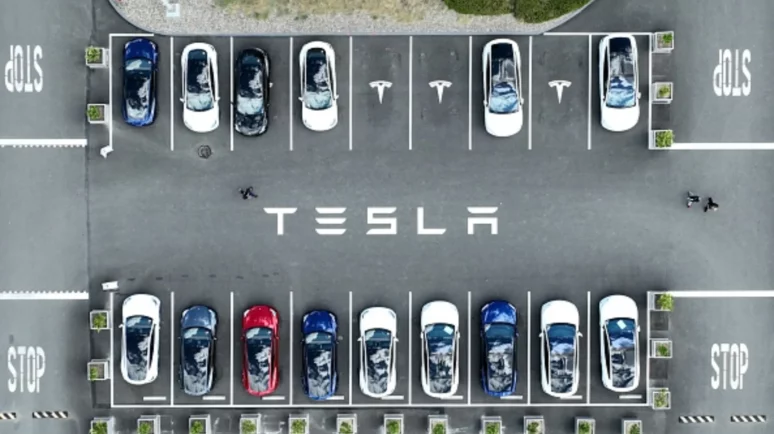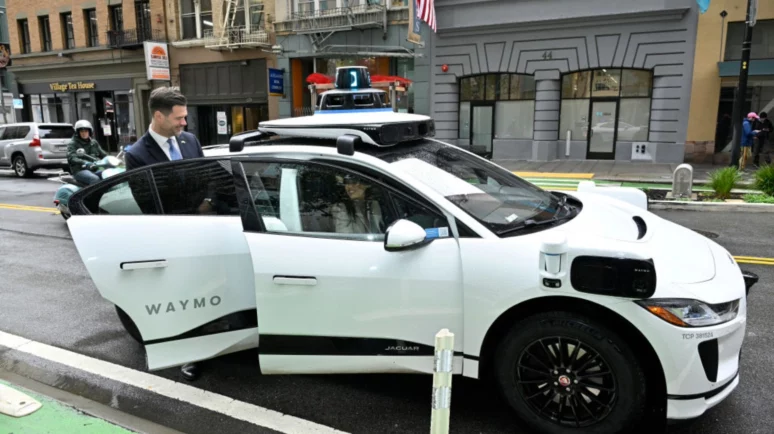Robotaxi Rivalry Revs Up: Can Tesla Outpace General Motors on the Road to Automation?

While there's significant excitement about Robotaxis, these face regulatory hurdles and technical limitations. l Source: Allen J. Schaben / Los Angeles Times via Getty Images
-
BusinessBitcoin Halving Sees Microstrategy Stock Jump, But ETF Competition Threatens MSTR4 days ago
-
BitcoinBitcoin Needs 100,000 Signatures for Switzerland Central Bank Reserve Vote5 days ago
-
CryptoBase Aerodrome Finance Launches Slipstream as Base TVL Edges Closer to $2 Billion6 days ago
-
CryptoBonk Price Prediction 2024: Is BONK Leading Memecoin Resurgence?3 days ago
- Despite advancements, Tesla’s Robotaxi launch faces delays due to a lack of necessary permits.
- General Motors’ investment in Cruise also shows the complexities of self-driving technology.
- Clear regulations are crucial for the safe and responsible implementation of Robotaxis.
Ride-hailing has significantly disrupted the taxi industry, capturing substantial market share in major markets worldwide. The next phase of this evolution is the introduction of Robotaxi services, which deploy driverless taxi fleets for on-demand mobility.
Robotaxis are autonomous vehicles summoned through ride-hailing apps, offering passengers convenient and efficient transportation without the need for a human driver. But the journey towards self-driving cars is still some way away.
Tesla Crashes With Regulators
Elon Musk recently announced Tesla’s plan to unveil its highly anticipated Robotaxi on August 8. This sparked both excitement and skepticism on the social media platform X.
Tesla Robotaxi unveil on 8/8
— Elon Musk (@elonmusk) April 5, 2024
Tesla’s Robotaxi has long been a subject of speculation and anticipation, with Musk frequently discussing his vision of Tesla owners monetizing their vehicles by incorporating them into a shared fleet. This concept would enable cars to generate revenue by autonomously transporting passengers when not in use by their owners.
However, despite Musk’s announcement, two regulatory agencies in California, the California Department of Motor Vehicles and the California Public Utilities Commission (CPUC), revealed that Tesla has not applied for the necessary permits to operate a driverless car service in the state. Similarly, Arizona and Nevada, two other states that regulate Robotaxis, have not been approached by Tesla regarding its plans.
Elon Musk said this month he plans to unveil a Tesla robotaxi this summer, but California and Nevada regulators said Tesla hasn’t applied for two permits it would need. https://t.co/qOiYlR2oTU
— NBC News (@NBCNews) April 12, 2024
The absence of permit applications raises concerns about the timeline for Tesla to launch its Robotaxi service, highlighting potential hurdles for Tesla.
General Motors Lags Behind
General Motors made a significant step into self-driving technology by acquiring a majority stake in Cruise, a startup, in 2016. However, Cruise has faced operational setbacks, with recent reports indicating a substantial devaluation.
While Cruise competes with other players like Alphabet’s Waymo and Tesla in the autonomous driving field, its journey has been fraught with challenges, including accidents and operational suspensions.
GM can “absolutely” catch Tesla in U.S. sales of EVs by 2025, CEO Mary Barra tells @Lebeaucarnews . https://t.co/XRwPhNgdac pic.twitter.com/wvRiu3xQDv
— CNBC (@CNBC) October 27, 2021
General Motors saw the Cruise investment as a strategic move to swiftly enter the self-driving market and collaborate with ride-hailing and delivery services. Despite investing $5.7 billion in Cruise between 2022 and 2023, the subsidiary has incurred $4.6 billion in operating losses.
Though Cruise maintains a healthy cash reserve, its ongoing burn rate suggests the need for additional capital infusion. While the potential of self-driving technology is promising, realizing success in this complex landscape requires significant investment and adept execution.
Cruise Doesn’t Give Up
Despite past challenges, Cruise is gearing up to resume testing its Robotaxis with safety drivers in Phoenix, Arizona. The company plans to collect road data in various cities, beginning with Phoenix. This city was chosen as the initial location due to Cruise’s existing vehicle presence.
According to Cruise spokesman Pat Morrissey, the company will restart manual driving operations to create maps and gather road information in select cities. This process involves human-driven vehicles without autonomous systems engaged, deemed crucial for validating Cruise’s self-driving systems as it progresses toward its driverless mission.
Today, we’re taking an important next step in returning to our mission: we're reintroducing a small fleet of human-driven vehicles in select cities – starting in Phoenix. These vehicles will create maps and gather road information, a critical step for validating future…
— cruise (@Cruise) April 9, 2024
The Robotaxi company has been striving to regain public trust following a harrowing incident where one of its cars struck and dragged a pedestrian in San Francisco last October. In the aftermath, California regulators accused Cruise of initially withholding crucial footage and incident details, leading to the suspension of its California license.
Subsequently, Cruise halted all operations across the nation, witnessed the resignation of founder and former CEO Kyle Vogt, terminated nine top executives, and downsized its workforce by a quarter. The company later appointed a new chief safety officer to bolster safety measures.
A Wider Overview
Robotaxis aren’t solely a US endeavor. China is emerging as a formidable player , mirroring the American timeline. In 2023, several Chinese cities, including Beijing and Shanghai, received government approval to deploy Robotaxis without safety operators. However, these services are confined to specific, often remote, areas within the cities, limiting accessibility for most residents.
The Middle East is swiftly embracing the Robotaxi sector, with support from both Chinese and American firms. Saudi Arabia, for instance, invested $100 million in the Chinese startup Pony.AI to introduce its vehicles to Neom, a cutting-edge city project. Concurrently, Dubai and Abu Dhabi are in a race to become the first Middle Eastern city to pilot driverless vehicles, utilizing technology from companies like Cruise and WeRide.

Chinese Robotaxi companies, like their US counterparts, face the common challenge of proving profitability. In response, they’ve shifted focus to monetization, with a trend emerging in 2023 of selling autopilot systems to other companies. By repackaging their technology into less advanced but more widely applicable services, such as urban autopilot systems for carmakers, they aim to generate quick revenue.
In Europe, however, Robotaxi development is still lagging, due in part to a preference for autonomous vehicles in mass transit. While countries like Germany, the UK, and France have conducted road tests for Robotaxis, widespread commercial operations remain a distant goal.
Giuseppe Ciccomascolo

Tesla Scraps Affordable Electric Vehicles, Announces Reveal Date of RoboTaxi

